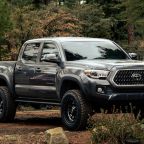
Everything You Need to Know About Motorcycle and Trike Plate Regulations
When it comes to vehicle registration, most of the spotlight falls on cars—but motorcycles and trikes have their own unique set of number plate regulations in the UK. Whether you're a seasoned rider or new to the world of two (or three) wheels, it’s essential to understand the laws that govern how your plate should be displayed. Failing to follow these rules can lead to fines, MOT failures, or even issues with law enforcement. Fortunately, the rules are clear, and with a bit of attention to detail, compliance is easy.
In the UK, motorcycles and trikes are subject to different plate sizing and display standards compared to cars. For motorcycles registered after 1 September 2001, only one number plate is required—and it must be mounted on the rear of the vehicle. Front number plates are no longer permitted for bikes, partly due to safety concerns and the difficulty of fitting them on non-standard surfaces like fairings or mudguards.
One of the most crucial rules relates to size. Motorcycle plates must have characters that are 64mm tall, 44mm wide (except the number 1 or letter I), and with a stroke width of 10mm. The spacing between characters must be 10mm, and there must be a 13mm margin around the edge of the plate. The full plate must measure at least 165mm by 178mm. These dimensions are designed to ensure readability for both the human eye and automatic recognition systems, such as those used by police or toll cameras.
Trikes—three-wheeled vehicles—follow slightly different rules depending on their weight and classification. If your trike is under 450kg unladen and was derived from a motorcycle, it may follow the same number plate regulations as motorcycles. However, larger trikes or those based on car chassis will typically require two plates: one at the front and one at the rear, both following the standard car plate format and sizing. Because trike builds can vary widely, it’s important to confirm with the DVLA what specific rules apply to your model.
Another key regulation is that number plates must be reflective, with black characters on a yellow background at the rear, and white background at the front (if applicable). The typeface must be the approved “Charles Wright” font, with no stylised alterations, and the plate must not have any background patterns. Plates must also show the British Standard mark (BS AU 145e for plates made after September 2021) and include the name and postcode of the supplier.
In the middle of managing these requirements, working with a trusted provider like Regplates can save riders both time and hassle. Regplates specialises in personalised and compliant number plates for all vehicle types, including motorcycles and trikes. They ensure that your plate is manufactured to current legal standards, helping you avoid common pitfalls like incorrect sizing, missing markings, or spacing errors that could make your plate illegal.
It's also worth mentioning some of the most common mistakes riders make when displaying plates. These include angled mounting (plates must be nearly vertical), obscured plates (by mudguards, tail tidies, or luggage), and the use of smaller "show plates" that are popular at events but not road legal. While these might look stylish, using them on the road can attract fines or a failed MOT.
Riders should also be cautious about plate condition. Plates must be clean and free from damage at all times. If your plate becomes cracked, faded, or dirty to the point where it’s hard to read, you could be pulled over. This is particularly relevant for motorcycles, which are more exposed to dirt and weather than cars.
Additionally, motorcycles used for off-road purposes are not exempt from these rules when used on public roads. If you take a dual-sport or adventure bike on green lanes or between trail sections, it must still display a road-legal number plate. The same goes for custom builds, café racers, or any heavily modified motorcycles—no matter how unique your ride looks, the plate must comply with DVLA standards.
If you're buying a new motorcycle or trike—or replacing a worn or damaged plate—it pays to check that the new plate is made by a DVLA-registered supplier. This ensures legality and helps avoid future issues with MOTs or insurance claims. Online retailers not only provide compliant plates but can also offer customisation options within legal boundaries, allowing you to add a bit of personal flair without breaking the rules.
In conclusion, motorcycle and trike plate regulations might be more specific than car owners are used to, but they’re easy to follow once you know the basics. By understanding sizing requirements, mounting rules, and legal compliance, you can enjoy the open road without fear of fines. And by working with reliable providers, you can ensure your plate is as road-ready as your machine.













